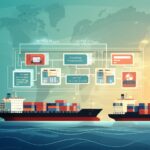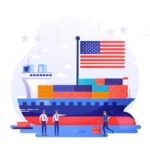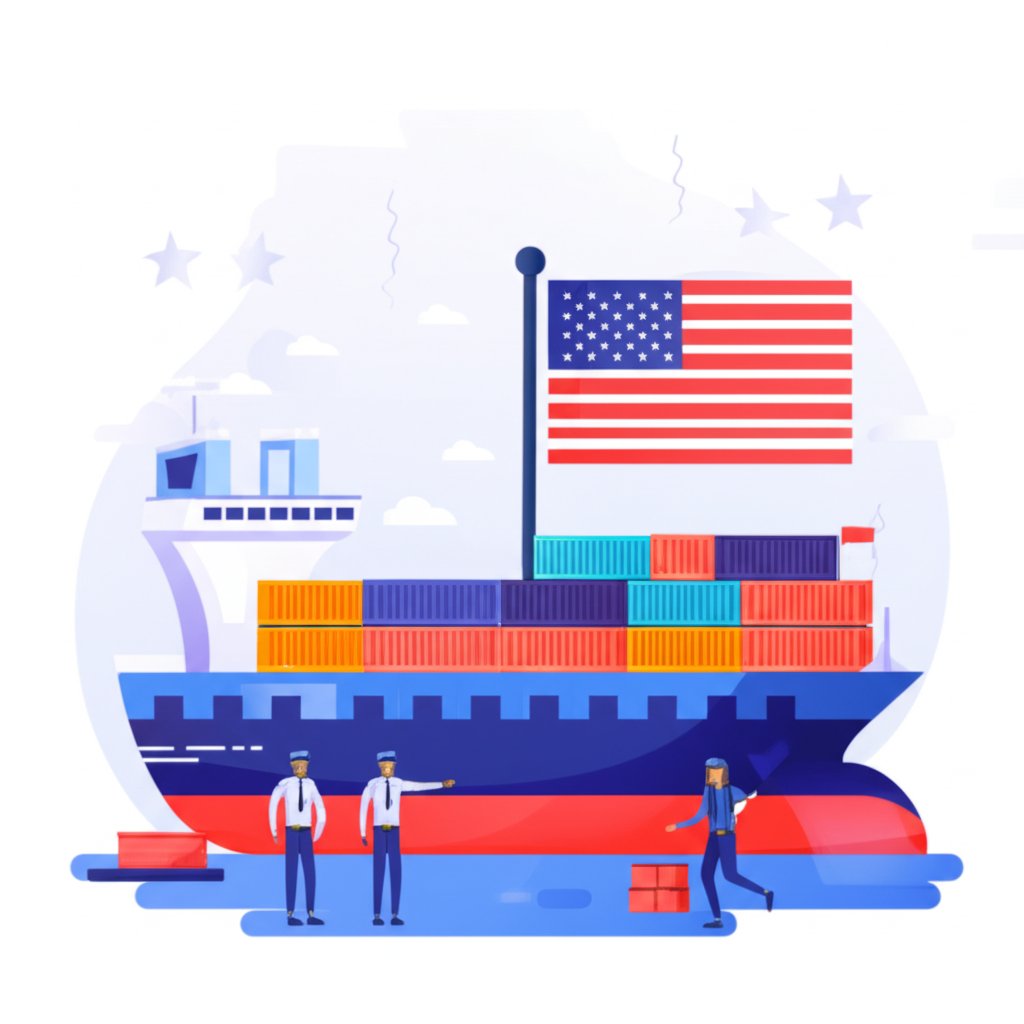
Introduction to US Import Tariff Rates
Ever wondered why some imported goods cost more than others, or why certain products seem to come with a higher price tag at customs? When you import goods into the United States, understanding US import tariff rates is essential for keeping your business competitive and compliant. But what exactly are these tariffs, and why do they matter so much in international trade?
What Are US Import Tariff Rates?
At their core, US import tariff rates are taxes imposed on goods that cross the US border and enter the country. These taxes, also known as import duties or the import tax rate to the USA, are collected by U.S. Customs and Border Protection (CBP). Importers—whether individuals or companies—are responsible for paying these tariffs when their goods arrive in the US.
Sounds complex? Let’s break it down with a simple example. Imagine you’re importing a shipment of shoes from overseas. When your goods arrive at a US port, CBP assesses a tariff based on the shoes’ category, value, and country of origin. The amount you pay isn’t random; it’s determined by a set of rules and rates published by US authorities.
Why Do Tariffs Exist?
Tariffs serve two main purposes:
- Revenue Generation: Historically, tariffs were a major source of government income. While their importance for revenue has declined over time, they still provide funds for federal programs and services.
- Protection of Domestic Industries: By making imported goods more expensive, tariffs help US-based producers compete with foreign manufacturers. This can be especially important for industries considered vital to the national economy or security, such as steel, agriculture, and automobiles.
For example, the US has long used tariffs to shield sectors like sugar and pickup trucks from foreign competition, sometimes keeping these tariffs in place for decades to support domestic jobs and businesses (Council on Foreign Relations).
How Are Tariff Rates Set?
Not all products face the same import tax rate to the USA. In fact, tariff rates can vary widely depending on several factors:
- Product Category: Each type of good—whether electronics, textiles, or food—falls under specific rules and rates.
- Declared Value: The value you declare for your shipment directly impacts the amount of duty you’ll pay.
- Country of Origin: Where your goods are made matters. Some countries face higher tariffs due to trade policies, while others may benefit from free trade agreements that lower or eliminate duties.
Additionally, special tariffs can be imposed on certain countries or products, such as those targeting goods from China or specific materials like steel and aluminum. These special measures can significantly alter the cost structure for importers.
Why Should Importers Care?
For businesses, understanding US import tariff rates isn’t just about compliance—it’s about managing costs and making informed sourcing decisions. A misstep in classifying your product or misunderstanding the applicable rate can lead to unexpected expenses, delays, or even penalties.
In the chapters ahead, we’ll explore how tariff rates are determined, how to calculate your duties, and strategies to optimize your import process. By the end of this guide, you’ll be equipped to navigate the complexities of US import tariffs with confidence and clarity.
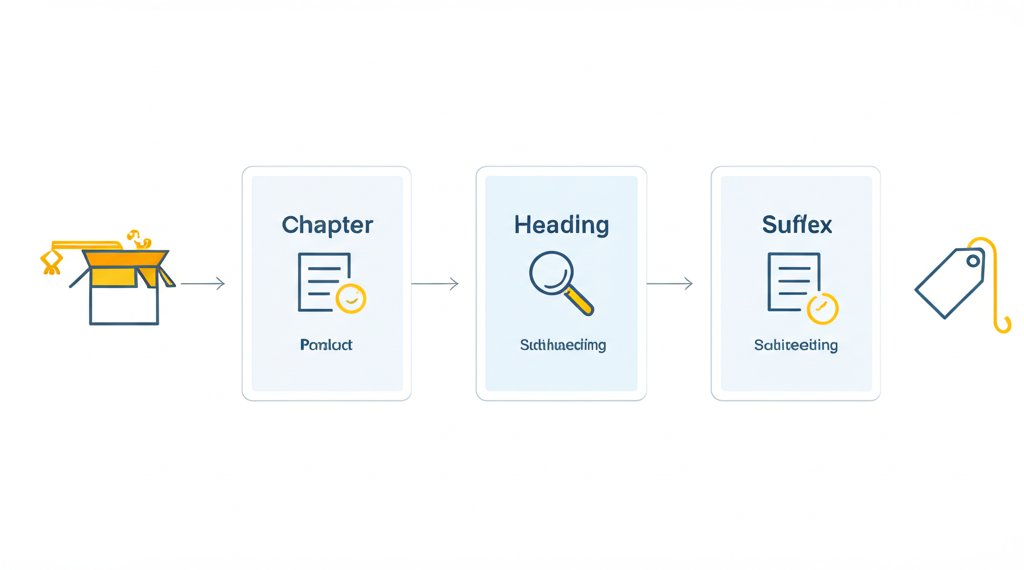
Understanding the Harmonized Tariff Schedule (HTS)
Ever wonder how customs officials know exactly what duty to charge for each imported product? The answer lies in a powerful classification system called the Harmonized Tariff Schedule (HTS). If you’re importing goods into the US, mastering the HTS—and knowing how to perform an HTS code lookup—can make or break your compliance and bottom line.
What Is the Harmonized Tariff Schedule US?
At first glance, the harmonized tariff schedule US might seem like a maze of numbers and legal jargon. But it’s actually a structured, internationally recognized system designed to classify every product crossing US borders. The US International Trade Commission (USITC) maintains the HTS, while US Customs and Border Protection (CBP) enforces it at ports of entry (Shopify).
Every imported product is assigned a unique 10-digit HTS code. These codes are not just bureaucratic details—they directly determine the tariff rate, eligibility for trade programs, and even whether your shipment will clear customs without delay.
Breaking Down the HTS Code Structure
Sounds complex? Let’s break it down. The HTS code is made up of several parts, each adding a layer of specificity:
- Chapter (First 2 digits): Broad product category. For example, Chapter 09 covers “Coffee, tea, maté and spices.”
- Heading (Next 2 digits): More specific grouping within the chapter. For cinnamon, the heading is 0906.
- Subheading (Next 2 digits): Narrows it further—e.g., 0906.20 for “crushed or ground cinnamon.”
- US Suffix (Final 4 digits): Adds US-specific details for duty and statistical purposes, such as 0906.20.00.00 for a particular form of cinnamon.
Imagine you’re importing umbrellas. The HTS code 6603.20.3000 refers to “hand-held umbrellas chiefly used for protection against rain.” Each digit sequence in this code pinpoints the product’s classification, ensuring the correct tariff is applied (Shipping Solutions).
Why Accurate Classification Matters
Getting the HTS code right is not optional—it’s essential. A simple misclassification can trigger costly penalties, shipment delays, and even seizure of goods. US law requires importers to exercise “reasonable care” in classifying their products. If you’re careless or negligent, you could face fines or audits from CBP (USA Customs Clearance).
Consider this: if you use an HTS code with a lower duty rate by mistake, and CBP discovers the error, you may owe back duties and face penalties based on the difference. Even honest mistakes can hold up your shipment or cost you more than expected.
Here’s a quick checklist to help you avoid HTS headaches:
- Always use the most recent version of the HTS from the official USITC website.
- Double-check product composition, function, and intended use before assigning a code.
- When in doubt, use the official HTS code lookup tool or seek a binding ruling from CBP.
Accurate HTS classification is the foundation for determining your tariff rate, qualifying for free trade agreements, and ensuring a smooth import process. In the next section, we’ll explore the key factors that influence how these rates are applied to your goods, so you can import with confidence and clarity.
Key Factors That Determine US Import Tariff Rates
Ever looked at two similar products and wondered why one faces a steeper tariff than the other? When you dig into US import tariff rates, you’ll notice the final cost isn’t just about what you’re shipping—it’s shaped by a handful of crucial variables. Understanding these factors helps you anticipate costs, avoid surprises at the border, and make smarter sourcing decisions.
The Declared Value: Your Starting Point
Let’s start with the declared value. This is the price you pay your supplier for the goods, and it’s the foundation for duty calculations. US Customs and Border Protection (CBP) expects this value to match your invoice and reflect the true transaction value. Under-declaring or over-declaring can trigger audits or penalties, so accuracy is a must (Clearit USA).
- Customs Duty Formula: Customs Duty = Declared Value × Tariff Rate
- Be sure to include only the value of the goods themselves. Charges like freight and insurance are generally not dutiable unless specifically required by CBP.
- Keep all supporting documents—such as invoices and contracts—organized and ready for review.
Imagine importing $10,000 worth of electronics. If the tariff rate is 10%, you’ll owe $1,000 in duties—before any other fees or surcharges.
Country of Origin: Why It Matters
Think all countries pay the same tariff? Not even close. The country of origin (COO)—where your product is manufactured—directly impacts which US tariff rates by country apply to your shipment. How CBP determines COO can get tricky, especially if parts come from multiple locations, but the rules are clear: the country where the last substantial transformation occurred is what counts.
- Some countries benefit from free trade agreements, lowering or eliminating tariffs on qualifying goods.
- Others may face higher rates due to trade imbalances or special US trade actions.
- Failure to correctly declare the COO can result in penalties or even seizure of goods.
For example, goods from Canada or Mexico may qualify for preferential rates under USMCA, while products from countries with significant trade surpluses—like China or Vietnam—now face sharply higher tariffs.
Special Tariffs: Section 301, Section 232, and Beyond
Even after you’ve nailed classification and valuation, special tariffs can upend your calculations. Over the past few years, the US has imposed a series of targeted tariffs that sit on top of regular duty rates. These special tariffs can dramatically increase your costs, especially if your supply chain touches certain countries or industries.
| Special Tariff | Target | Impact |
|---|---|---|
| Section 301 | Goods from China | Tariffs exceeding 50% on nearly all imports, with some categories reaching up to 89% |
| Section 232 | Steel, aluminum, and select critical minerals | Additional duties on top of standard rates, aimed at protecting US industries |
| Reciprocal Tariffs (2025) | Countries with significant trade surpluses (EU, Japan, Vietnam, etc.) | Baseline 10% on most, but much higher for some nations—average US tariff rates now around 23% |
Sound overwhelming? These special tariffs US policies are always evolving, so it’s crucial to check the latest updates before every shipment. Even countries that were once lower-risk—like Vietnam or Cambodia—are now subject to steep new levies.
Other Influencers: Trade Policy and Political Decisions
Beyond the main variables, remember that US import tariff rates are shaped by ongoing trade negotiations and political decisions. Tariff rates can change quickly, and exemptions or new surcharges may be announced with little warning. Staying up to date with CBP and USITC announcements is essential for every importer (Clearit USA).
In summary, the final tariff you pay depends on a mix of declared value, country of origin, product classification, and any special tariffs in effect. Next, we’ll walk through how to turn these variables into an accurate duty calculation—so you can budget with confidence and avoid costly surprises.
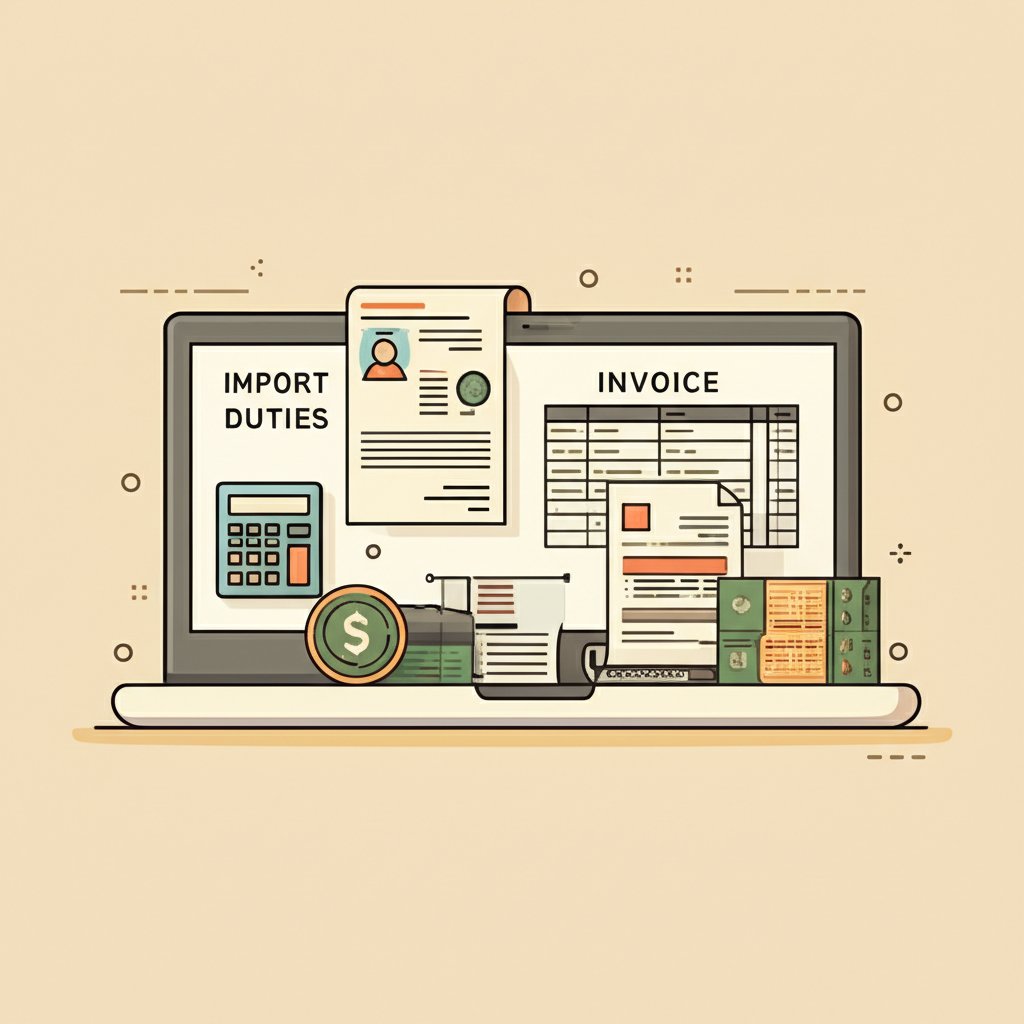
How to Calculate US Import Duties Accurately
Ever tried to estimate your total landed cost, only to get stumped by import duties and hidden fees? If you’ve ever searched for a reliable US import duty calculator or wondered how to calculate import duties USA-bound goods, you’re not alone. The process might seem overwhelming, but with the right steps, you can approach every shipment with clarity and confidence.
Step 1: Gather the Essential Information
Before you crunch any numbers, you’ll need three key pieces of data:
- Declared Value of Goods: The price you paid your supplier, as shown on your commercial invoice.
- HTS Code: The 10-digit Harmonized Tariff Schedule code that precisely classifies your product.
- Country of Origin: Where the product was manufactured or last substantially transformed.
Getting these details right is critical. An error in any field can lead to incorrect duty payments, shipment delays, or even costly penalties (CBP: Determining Duty Rates).
Step 2: Find the Correct Tariff Rate Using the HTS Code
Sounds tricky? Here’s how you can do it:
- Go to the official USITC Harmonized Tariff Schedule website.
- Navigate to the section or use the search tool to locate your product’s 10-digit HTS code.
- Review the corresponding duty rate for your product and country of origin.
Remember, the tariff rate listed is typically a percentage applied to the declared value. If your product qualifies for a free trade agreement or faces a special tariff, this will be noted in the HTS or in Chapter 99 for temporary or additional duties.
Step 3: Calculate the Customs Duty
Once you have the declared value and the tariff rate, use this basic formula:
Customs Duty = Declared Value × Tariff Rate
Let’s make this real with a sample scenario:
| Item | Example Value |
|---|---|
| Declared Value | $10,000 |
| HTS Code | 6203.42.4011 (Men’s cotton trousers) |
| Tariff Rate | 16.6% |
| Customs Duty | $1,660 |
In this example, you’d pay $1,660 in customs duty for a $10,000 shipment of men’s cotton trousers.
Step 4: Factor in Additional Fees—MPF and HMF
Did you know your duties aren’t the only fees? Two common “user fees” often apply:
- Merchandise Processing Fee (MPF): Calculated at 0.3464% of the declared value, with a minimum of $26.22 and a maximum of $508.70 for formal entries. For shipments under $2,500, a flat $2.18 applies (Freightright: HMF and MPF).
- Harbor Maintenance Fee (HMF): If your goods arrive by ocean, this fee is 0.125% of the declared value, with no minimum or maximum.
Here’s how these fees would look for our sample shipment:
| Fee Type | Calculation | Amount |
|---|---|---|
| MPF | $10,000 × 0.3464% | $34.64 |
| HMF (if by sea) | $10,000 × 0.125% | $12.50 |
Total Import Fees: $1,660 (duty) + $34.64 (MPF) + $12.50 (HMF) = $1,707.14
Step 5: Consider Special Tariffs or Exemptions
Don’t forget to check if your product is subject to special tariffs (like Section 301 for China) or if it qualifies for reduced rates under a free trade agreement. These can significantly alter your total cost and should always be verified in the HTS or with a customs expert.
Why Pre-Shipment Inspections Matter for Accurate Valuation
Imagine calculating your duties perfectly—only for customs to flag your declared value due to quality issues or missing documentation. That’s why many importers invest in pre-shipment inspections. Not only do these inspections help ensure your goods meet the agreed-upon standards, but they also provide the supporting paperwork needed to defend your declared value at customs.
For e-commerce sellers and Amazon FBA importers, a professional inspection service—like the one outlined in the Amazon FBA inspection guide—can help you avoid costly customs disputes, rejections, or even shipment returns. It’s an extra layer of protection that can save you from much larger financial headaches down the line.
Summary Checklist: Calculating US Import Duties
- Identify your product’s HTS code using the USITC website
- Confirm the correct tariff rate and check for any special duties or exemptions
- Calculate customs duty: Declared Value × Tariff Rate
- Add MPF and HMF as needed
- Keep all supporting documents for declared value and classification
- Consider a pre-shipment inspection to prevent valuation or compliance issues
With these steps, you’ll move from guesswork to precision—making sure the duties you pay are accurate, predictable, and fully compliant. Next, let’s explore how free trade agreements and exemptions can help you further reduce your US import tariff rates and maximize your savings.
The Role of Free Trade Agreements (FTAs) and Exemptions in Reducing Tariff Rates
Ever wondered if there’s a way to legally import goods into the US at a lower—or even zero—tariff rate? When you’re navigating US import tariff rates, understanding how Free Trade Agreements (FTAs) and key exemptions work can mean the difference between a costly shipment and a competitive edge. Let’s unravel how these programs can help you save.
How US Free Trade Agreements Lower Tariffs
Imagine importing electronics from Mexico or apparel from Singapore. If your goods qualify under a US free trade agreement, you could pay little to no duty at all. FTAs are special deals the US makes with other countries to lower or eliminate tariffs on specific products, provided certain conditions are met. As of now, the United States has comprehensive FTAs with 20 countries, including key trading partners like Canada, Mexico, Australia, and Korea (USTR).
Here’s a quick look at the countries with which the US has FTAs in force:
- Australia
- Bahrain
- Canada
- Chile
- Colombia
- Costa Rica
- Dominican Republic
- El Salvador
- Guatemala
- Honduras
- Israel
- Jordan
- Korea
- Mexico
- Morocco
- Nicaragua
- Oman
- Panama
- Peru
- Singapore
Additionally, there is a focused agreement with Japan covering critical minerals.
Qualifying for FTA Benefits: Rules of Origin and Documentation
Sounds promising, but how do you know if your goods qualify? The answer lies in the rules of origin. Each FTA has specific criteria—often called “ROOs”—that determine whether a product is considered to originate from an FTA partner country. These rules can be based on where the product was made, the percentage of local content, or whether the product underwent a substantial transformation during manufacturing (Trade.gov).
- Tariff Shift Rule: Your product qualifies if non-originating components are transformed enough to change their tariff classification.
- Regional Value Content: A certain percentage of the product’s value must come from the US or the FTA partner country.
To claim reduced or zero duties, you’ll need a certificate of origin or other supporting documentation. This proves your goods meet the FTA’s requirements and allows you to benefit from preferential tariff rates.
The De Minimis Exemption USA: Duty-Free for Small Shipments
What if you’re shipping low-value goods? The de minimis exemption USA is a game-changer. For shipments valued at $800 or less, most goods can enter the US duty-free. This threshold applies to many e-commerce shipments and small parcels, offering a streamlined entry process and significant cost savings (Trade.gov: De Minimis Value).
- No duty or taxes for shipments under $800, regardless of country of origin (with some exceptions for restricted goods).
- Applies to both individuals and businesses importing goods for resale or personal use.
However, always check for the latest updates, as trade policy changes can adjust the de minimis threshold or restrict eligibility for certain countries or product categories.
Major US Free Trade Agreements at a Glance
To help you plan your sourcing and shipping, here’s a summary of the main FTAs:
- USMCA (United States-Mexico-Canada Agreement): Covers most goods traded among the US, Canada, and Mexico with robust rules of origin requirements.
- CAFTA-DR (Dominican Republic-Central America FTA): Includes Costa Rica, El Salvador, Guatemala, Honduras, Nicaragua, and the Dominican Republic.
- KORUS (US-Korea FTA): Offers broad tariff reductions for qualifying goods from South Korea.
- Other Bilateral FTAs: With Australia, Israel, Chile, and more—each with unique rules and product coverage.
Putting It All Together
Leveraging FTAs and exemptions like the de minimis rule can dramatically reduce your landed costs. But remember, you must meet all eligibility requirements and maintain proper documentation. Not sure if your goods qualify? Consult the relevant FTA’s rules of origin or seek guidance from a trade compliance expert.
Next up, we’ll dive into practical strategies for legally reducing your import tariff burden, including valuation methods and product engineering tricks that go beyond FTAs and exemptions.

Strategies for Legally Reducing Your Import Tariff Burden
When you’re facing steep US import tariff rates, it’s natural to ask: Is there a legal way to reduce the duties you pay—without relying solely on free trade agreements? The answer is yes, and savvy importers use a range of compliant strategies to trim their landed costs. Below, we break down three powerful approaches: the First Sale for Export rule, unbundling non-dutiable costs, and tariff engineering. Each offers a practical way to reduce US import tariffs while staying firmly within the law.
Unlocking Savings with the First Sale for Export Rule
Imagine you’re buying products through a middleman, who sources them from a manufacturer overseas. Did you know you might be able to pay duties based on the lower price paid by the middleman to the manufacturer—rather than the higher price you pay the middleman? That’s the essence of the First Sale for Export US rule.
- How it works: In multi-tiered transactions, if you can prove the first sale (from manufacturer to middleman) was a bona fide, arm’s length transaction, and the goods were clearly destined for the US at the time of sale, you can declare the lower first-sale price as your customs value.
- What you need: Comprehensive documentation—contracts, invoices, purchase orders, bills of lading, and proof of payment. The transaction must be at arm’s length (especially important if parties are related) and CBP will scrutinize the paperwork closely.
- Why it matters: The first sale price is often significantly lower, which means a lower dutiable value and reduced tariff payments. But remember: the burden of proof is on you, and incomplete records can result in penalties or rejection of your claim. Learn more about the First Sale Rule.
Sounds like a paperwork headache? For high-volume or high-value shipments, the savings can be well worth the effort—and compliance is non-negotiable.
Unbundling Non-Dutiable Costs: Don’t Pay Duty on What You Don’t Have To
Many importers unknowingly overpay duties by including costs that aren’t actually dutiable. By separating these non-dutiable charges from your product price—and documenting them properly—you can legally reduce your customs value and, in turn, your duty payments.
| Common Non-Dutiable Costs | Key Requirements |
|---|---|
| Foreign inland freight | Must be separately itemized and supported by actual invoices |
| International freight & insurance | Actual (not estimated) costs, with full documentation |
| Warehousing (by third parties) | Must not be provided by the seller or related parties |
| Pre-shipment inspection fees (from third parties) | Not essential to production; must be paid to unrelated parties |
| Origin charges, documentation fees | Must be incident to international shipment and clearly documented |
For example, if your supplier’s invoice bundles the product price and freight together, you might be paying duty on the full amount. But if you break out the freight and provide supporting documents, you can exclude it from the dutiable value—often saving thousands over time. Read more on eliminating non-dutiable charges.
Tariff Engineering: Designing for Duty Savings
What if you could change your product just enough to fit a lower-duty classification—without compromising quality? That’s the art of tariff engineering. It’s a legal, strategic approach where you modify your product’s design, materials, or packaging to ensure it qualifies for a more favorable HTS code.
- Sometimes, a small change—like swapping a material or altering packaging—can shift your item into a lower tariff bracket.
- Successful tariff engineering requires close collaboration between your design, legal, and logistics teams to ensure compliance and avoid misclassification.
- CBP monitors classification changes closely, so all modifications must be genuine and justifiable. Attempting to “game the system” can result in audits and penalties. Explore tariff engineering strategies.
For instance, companies facing high Section 301 tariffs on Chinese imports have redesigned products or adjusted sourcing strategies to legally minimize duty exposure. However, this approach must be planned carefully to withstand customs scrutiny.
Quality Control and Pre-Shipment Inspections: An Overlooked Cost Saver
Ever had a shipment delayed or rejected because of compliance issues or incorrect labeling? The costs—lost sales, storage fees, even total loss of your tariff investment—can dwarf any savings from tariff strategies. That’s why robust quality control and pre-shipment inspections are a smart investment. They help you:
- Ensure your goods meet US and Amazon FBA requirements before shipping
- Prevent costly rejections, relabeling, and negative customer reviews
- Protect your initial investment—including the duties you’ve already paid
For a detailed look at how inspection services can safeguard your imports, check out the Amazon FBA inspection guide. It’s a proactive step that complements your tariff reduction efforts and helps you achieve true landed-cost optimization.
Bringing It All Together
Reducing your US import tariff burden isn’t about cutting corners—it’s about knowing the rules and using every compliant strategy at your disposal. By leveraging the First Sale for Export rule, unbundling non-dutiable costs, engineering your products for tariff efficiency, and investing in quality control, you can legally minimize duty payments and protect your business from costly surprises. Next, we’ll shift focus to customs compliance—because even the best savings strategies only work if you stay on the right side of the law.

Ensuring Customs Compliance and Avoiding Penalties
Ever wondered what separates a smooth import process from one riddled with fines, delays, or even costly audits? The answer often comes down to customs compliance US requirements—specifically, your responsibility as an importer to exercise “reasonable care.” Let’s break down what that means, why it matters, and how you can avoid the most common pitfalls.
What Does “Reasonable Care” Really Mean?
Sounds like legal jargon? In practice, “reasonable care” is about taking proactive steps to ensure your customs declarations are complete, accurate, and truthful. The U.S. Customs and Border Protection (CBP) expects importers to understand the rules, verify their paperwork, and maintain proper records. If you neglect these duties—even by accident—you could face steep penalties or become the target of a customs audit (CBP: Reasonable Care).
Imagine you’re importing electronics, and you misclassify a shipment or undervalue your goods. Even an honest mistake can trigger fines or shipment holds. That’s why CBP holds importers—not just brokers—accountable for the accuracy of every entry.
Record-Keeping: The Five-Year Rule
Think you can toss your paperwork once your goods clear customs? Think again. US law requires importers to keep all records related to each import transaction for at least five years from the date of entry or from the date the record was created. This includes invoices, shipping documents, HTS classifications, certificates of origin, and any correspondence with customs or partner agencies (Shipping Solutions: Import Record-Keeping Compliance).
- Retention: Keep records organized by entry number for easy retrieval during audits.
- Format: Paper or electronic records are acceptable, as long as they are accessible and complete.
- Responsibility: Even if your customs broker keeps some files, you are ultimately responsible for maintaining your own complete records.
Why is this so important? Failing to maintain proper records can result in fines of up to $10,000 per entry for simple negligence, and up to $100,000 for willful violations. Trying to reconstruct files years later is time-consuming and risky—so proactive organization is your best defense.
Don’t Overlook Partner Government Agencies
Did you know that clearing US customs may involve more than just CBP? Depending on your product, other agencies like the FDA (for food, drugs, cosmetics), USDA (for agricultural goods), or CPSC (for consumer products) may have their own rules and documentation requirements. Overlooking these can lead to shipment holds, rejections, or even destruction of goods.
- FDA: Requires prior notice, registration, and sometimes laboratory testing for food imports.
- USDA: Enforces phytosanitary certificates and import permits for plants, seeds, or animal products.
- CPSC: Mandates safety certifications for toys, electronics, and other consumer goods.
Before shipping, check which agencies regulate your product and ensure you have every required permit, certificate, or label. Missing just one document can delay your entire shipment.
Common Compliance Mistakes That Trigger Penalties
Wondering how to avoid import penalties USA importers dread? Start by steering clear of these frequent errors:
- Misclassification: Using the wrong HTS code can lead to underpayment or overpayment of duties—and hefty penalties if discovered.
- Incorrect Valuation: Declaring an inaccurate value, whether by mistake or due to missing documentation, is a red flag for auditors.
- Improper Country of Origin Marking: Failing to determine or properly declare the true origin of your goods can result in seizure or denial of entry.
- Inadequate Record-Keeping: Not maintaining complete, organized records for five years can lead to large fines—even if your broker has some of the paperwork.
- Ignoring Partner Agency Requirements: Overlooking FDA, USDA, or CPSC rules can cause costly delays or product destruction.
- Incorrect Use of Trade Programs: Claiming FTA benefits or exemptions without proper documentation or eligibility can trigger audits and back duties.
Here’s a practical tip: Use a compliance checklist for each shipment to make sure every detail is covered, from product classification to supporting documents. This not only reduces your risk of errors but also demonstrates proactive compliance if CBP comes calling.
Staying Ahead: Best Practices for Customs Compliance US
- Regularly train your staff on customs requirements and updates.
- Conduct internal audits of your import files and processes.
- Work closely with knowledgeable customs brokers and trade advisors.
- Stay informed about changes in regulations and agency requirements.
By prioritizing reasonable care, meticulous record-keeping, and awareness of all regulatory requirements, you’ll not only avoid costly penalties but also build a reputation as a trusted, reliable importer. In the final section, we’ll summarize the key strategies for mastering US import tariff rates and guide you toward resources that can help protect your investment and streamline your import process.
Conclusion
When you step into the world of importing, you quickly realize that managing US import tariff rates is more than just paying a bill—it’s about building a resilient, profitable business in an environment that’s always changing. So, what does it take to succeed in 2025 and beyond?
Key Strategies for Navigating US Import Tariffs 2025
Let’s recap the essential import compliance strategies that every importer should master:
- Accurate HTS Classification: Start with the right Harmonized Tariff Schedule (HTS) code for every product. Misclassification is one of the most common—and costly—mistakes importers make. Regularly review your classifications and seek expert advice when in doubt.
- Correct Valuation: Declare the true transaction value of your goods, keeping all supporting documentation organized. Remember, under- or over-valuing can trigger audits and penalties.
- Leverage FTAs and Exemptions: Use Free Trade Agreements like USMCA and the de minimis exemption to reduce or eliminate duties where possible. Always check the latest rules, as trade policy can shift quickly.
- Maintain Full Compliance: Build robust record-keeping systems and stay on top of requirements from CBP and partner government agencies. Proactive compliance helps you avoid costly disruptions and keeps your reputation strong.
Stay Agile: The Evolving Tariff Landscape
If you’ve followed the headlines, you know that US import tariffs 2025 are more complex and dynamic than ever. New authorities—like IEEPA and Section 232—have brought sweeping changes, impacting both costs and compliance expectations. Importers who adapt quickly, audit their supply chains, and seek out exemptions or new sourcing strategies will be best positioned to thrive.
But staying up to date isn’t easy. Tariff rates, country-specific surcharges, and eligibility for duty-free treatment can change with little notice. That’s why it’s crucial to make ongoing education and process reviews part of your regular business routine.
The Value of Customs Brokers and Trade Experts
Ever felt overwhelmed by the paperwork, regulations, or sudden policy shifts? You’re not alone. Working with a skilled customs broker or trade compliance consultant can save you time, money, and stress. These professionals:
- Ensure your documents and classifications are accurate and complete
- Keep you compliant with the latest regulations
- Identify opportunities for duty savings and process improvements
- Help you respond to audits, requests for information, or shipment holds
Imagine having a trusted partner who can spot errors before they become expensive problems, or who knows exactly how to leverage new trade programs as soon as they’re available. That’s the peace of mind and competitive edge that comes from expert support.
Protecting Your Investment: Beyond Tariffs
While tariffs are a fixed, unavoidable part of your landed cost, operational risks—like shipment rejections, labeling errors, or non-compliance with marketplace standards—can wipe out your profit entirely. That’s why quality control and pre-shipment inspections are just as important as your duty calculations. For e-commerce sellers and Amazon FBA importers, the Amazon FBA inspection guide is an invaluable resource. It helps ensure your goods meet all requirements before they leave the factory, protecting every dollar you’ve invested—including the significant sums paid in duties.
Empower Yourself for Success
Mastering US import tariff rates isn’t just about compliance—it’s about seizing opportunities in a global marketplace. By staying informed, building strong compliance systems, leveraging expert support, and protecting your investment at every stage, you’ll not only avoid costly mistakes but also gain a true competitive advantage.
Ready to take the next step? Explore the Amazon FBA inspection guide to safeguard your imports and optimize your process from the factory floor to the US market. In a world of shifting tariffs and rising compliance standards, proactive preparation is your best asset for long-term success.
Frequently Asked Questions about US Import Tariff Rates
1. What is the import tax rate to the USA?
The import tax rate to the USA, also known as the tariff or duty rate, varies depending on the product’s classification, its declared value, and the country of origin. While standard duty rates can range from 0% to over 30%, the typical rate for many goods is around 5-6%. Some products may be duty-free, while others—especially those affected by special tariffs or trade actions—can face significantly higher rates. Always check the latest Harmonized Tariff Schedule and consider special tariffs or exemptions that may apply to your shipment.
2. How can I find import duty rates in the US?
To find the correct import duty rate in the US, first determine your product’s 10-digit Harmonized Tariff Schedule (HTS) code. Use the official US International Trade Commission (USITC) HTS search tool to look up the code and view the applicable duty rate for your product and its country of origin. This ensures you get the most accurate and current information for your specific goods.
3. Where can I look up tariff rates for my products?
You can look up tariff rates for your products using the USITC’s Harmonized Tariff Schedule database at hts.usitc.gov. Enter your product description or browse the HTS chapters to find your product’s code and corresponding tariff rate. This resource provides official and up-to-date rates, including any special tariffs or exemptions.
4. How do Free Trade Agreements (FTAs) affect US import tariff rates?
Free Trade Agreements (FTAs) can significantly reduce or eliminate US import tariff rates for qualifying goods. If your product meets the rules of origin and documentation requirements under an FTA—such as USMCA for North America or KORUS for South Korea—you may benefit from lower duty rates or duty-free entry. Always verify eligibility and maintain proper certificates of origin to claim these benefits.
5. What steps can I take to legally reduce my US import tariff burden?
Importers can legally reduce their tariff burden by using strategies such as the First Sale for Export rule (declaring the manufacturer’s price in multi-tiered transactions), unbundling non-dutiable costs from the invoice, and engaging in tariff engineering to classify products under lower-duty HTS codes. Additionally, investing in quality control and pre-shipment inspections helps prevent costly customs disputes and shipment rejections, protecting your initial investment.


